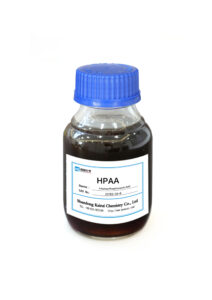HPAA (2-Hydroxyphosphonocarboxylic Acid) is considered to be relatively environmentally friendly when used and handled appropriately. Here are some points to consider regarding its environmental impact:
- Biodegradability: HPAA is readily biodegradable under aerobic conditions, meaning it can be broken down by natural processes in the presence of oxygen. This property suggests that HPAA has a reduced potential for long-term persistence in the environment.
- Low toxicity: HPAA is generally considered to have low acute toxicity to aquatic organisms. However, like any chemical substance, it should be used according to recommended guidelines and precautions to minimize any potential adverse effects on the environment.
- Metal Ion Sequestration: HPAA’s main function is as a chelating agent, capable of sequestering metal ions. This property is beneficial in applications such as water treatment, where HPAA can prevent the precipitation or scaling caused by metal ions. By reducing the concentration of free metal ions, HPAA can help minimize their environmental impact.
- Recommended Usage and Disposal: To ensure environmental friendliness, it is important to follow proper usage and disposal practices for HPAA. This includes using appropriate dosages, avoiding excessive or unnecessary application, and adhering to local regulations for waste disposal.
While HPAA is generally regarded as environmentally friendly, it is still important to handle and use it responsibly, taking into account specific environmental conditions and local regulations. Consulting safety data sheets (SDS) and following manufacturer recommendations will help ensure safe and environmentally conscious usage.
